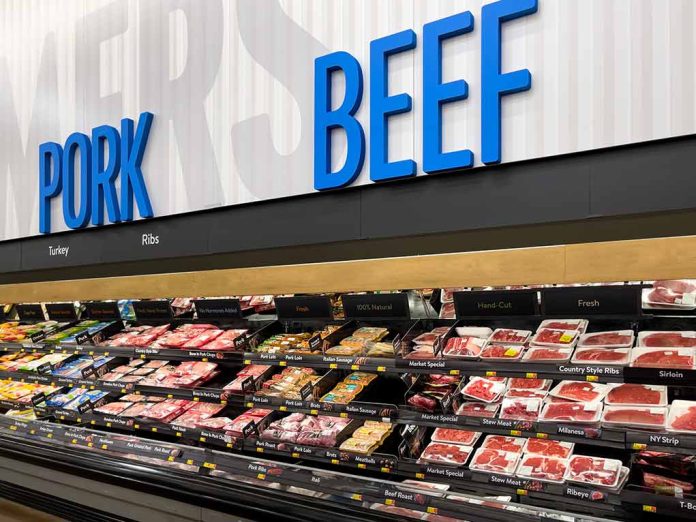🔴 Website 👉 https://u-s-news.com/
Telegram 👉 https://t.me/usnewscom_channel
The USDA chooses to uphold stability by permitting cattle imports from Mexico despite new threats from a parasitic outbreak.
At a Glance
- USDA implements advanced inspection protocols for cattle imports.
- New World screwworm cases spark concern over biosecurity.
- USDA balances market pressures with agricultural security.
- Agricultural and livestock sectors face economic challenges.
USDA’s Delicate Balancing Act
The New World screwworm’s resurfacing in Mexico has not prompted the USDA to halt cattle imports, a move some may find surprising given the considerable history of screwworm outbreaks leading to import suspensions. Instead, the USDA has doubled down on implementing robust inspection measures to mitigate the potential risks without disrupting trade. These measures aim to preserve U.S. cattle supply stability, which is crucial in controlling the escalating beef prices sending ripples through the economy.
Mexico has developed pre-clearance inspection protocols effective in key regions such as San Jeronimo and Agua Prieta. These regions have gained APHIS approval, underscoring USDA’s firm stance on maintaining stringent biosecurity while resuming imports. Such steps ensure that imported cattle are clear of parasites before reaching U.S. soil, showcasing a commitment to biosecurity without succumbing to drastic trade halts.
Screw Worm Headline Update
AM Headline: THE WORLD ORGANIZATION FOR ANIMAL HEALTH SAYS THE NEW WORLD SCREWWORM PEST WAS FOUND IN A COW IN MEXICO’S TABASCO STATE LAST WEEK
PM Headline: USDA WILL NOT TAKE ADDITIONAL ACTION TO RESTRICT CATTLE IMPORTS FROM MEXICO BASED ON LATEST…
— Oliver – Blue Line Futures (@OliverSloup) February 18, 2025
Economic and Agricultural Pressures
USDA’s choice arises from an intricate blend of economic necessity and agricultural safeguarding. Amidst cattle shortages contributing to record-high beef prices, import restrictions could compound the problem, increasing financial strain on American consumers and cattle industries alike. Maintaining importation with enhanced safeguards offers a tangible solution to balance economic demands with biosecurity.
“The geopolitical environment has become less favorable, with growing threats to free trade from all corners of the world.” – Christine Lagarde
To effectively manage this delicate situation, APHIS collaborates with Mexico and Central America to eradicate the screwworm. Measures extend beyond mere administrative protocols, including innovative biological interventions like releasing sterile flies to control the parasite population, showcasing international cooperation in safeguarding livestock health.
The Future of U.S. and Mexico Cattle Trade
APHIS’s commitment doesn’t stop at current protocols; plans to expand inspection infrastructure and reopen additional trade ports are underway. Mexico and the U.S. are engaging in comprehensive endeavors to eradicate screwworm, seeking to not only mitigate present threats but establish a more resilient and secure trade framework moving forward.
This cooperative stance illustrates the dual imperative of maintaining cattle trade flow while aggressively tackling biosecurity threats. The U.S. agricultural market’s vulnerability to external factors necessitates such careful navigation, a challenge the USDA is meeting head-on with both precision and pragmatic foresight.
